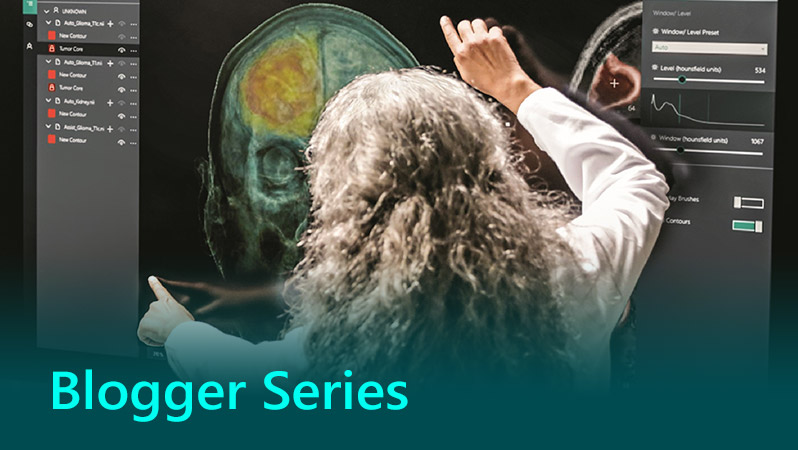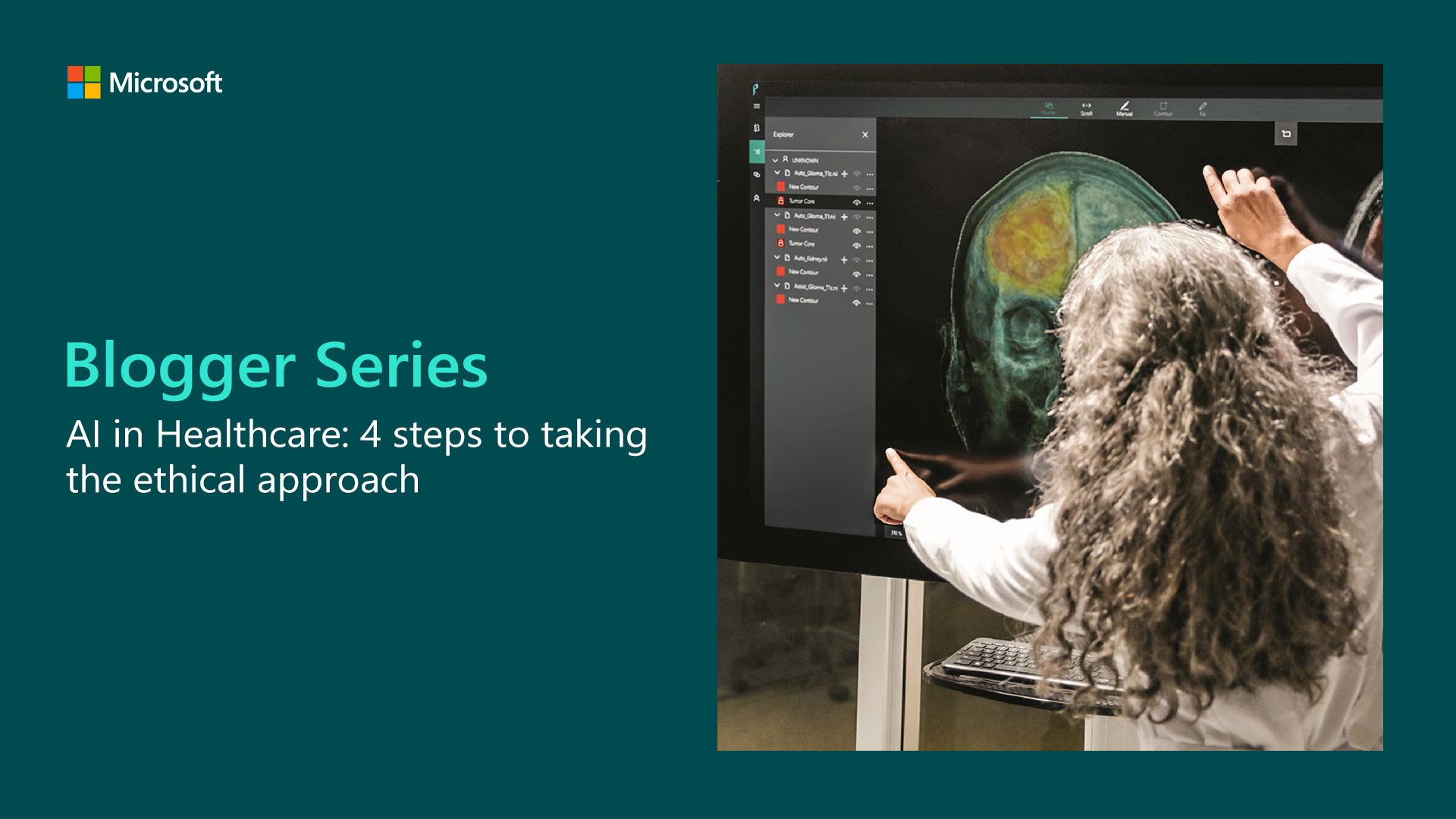
AI in Healthcare: 4 steps to taking the ethical approach

 We’re going to be sharing a story every week for the 12 weeks of summer, showing you how healthcare organisations are using technology to transform patient outcomes and increase productivity. For the third blog in the series, Phil Allen, Technology Strategist for Healthcare and Life Sciences at Microsoft, shares four practical steps to taking an ethical approach to using AI in healthcare.
We’re going to be sharing a story every week for the 12 weeks of summer, showing you how healthcare organisations are using technology to transform patient outcomes and increase productivity. For the third blog in the series, Phil Allen, Technology Strategist for Healthcare and Life Sciences at Microsoft, shares four practical steps to taking an ethical approach to using AI in healthcare.
The ethical use of data has dominated headlines in recent times, but we rarely hear discussions over the ethical use of AI.
Microsoft CEO Satya Nadella is one of the few to tackle the tricky issue of ethical AI. In an article for Slate, Satya riffed on Isaac Asimov’s famous ‘Three Laws of Robotics’, producing his own ‘Ten Laws of AI’. It’s a brilliantly considered set of rules that should guide how AI is developed and deployed over the coming years.
Introducing AI and ethics to your business
In a healthcare setting, artificial intelligence promises improved diagnosis, better patient outcomes and, crucially, more time for professionals to spend with their patients. But the industry’s heavy regulation means mass adoption relies on AI data being measured by the same patient efficacy and safety standards as drugs, devices, and diagnostics.
For AI to have the greatest impact, key questions must be asked:
- How do we find, access, and understand this data, integrating it across healthcare, clinical, and research applications to improve the patient experience and outcomes?
- How should we quantify the input, so that the output satisfies both the regulatory and healthcare use case?
- How can we increase AI’s rate of adoption when only 20% of medical data is machine-readable?
The answer: FAIR Data Principles.
FAIR Data Principles, if you haven’t heard of them, are a set of nationally recognised guidelines that qualifies data and metadata for AI applications.
If your organisation wishes to take an ethical approach to AI, it’s worth studying how the healthcare sector is adapting to the technology right now.
Step 1. Make your data searchable
The first step is making your data searchable – or, to put the F into FAIR, ‘findable’. All data requires a persistent identifier that ‘follows’ it wherever it goes, and metadata that explicitly defines what it is. The trick is to make sure it’s a completely unique identifier. Human operators and computers are then able to find and actually use that data – rather than letting it fester, forgotten on a server somewhere.
Step 2. Ensure all data is accessible
Users must easily understand how to obtain the data they need, even if access requires authorisation. But it also means they should be able to access the data without specialist software – it should literally be as simple as clicking a link. Delivering accessibility also means the metadata can still be accessed, even after the core data has been removed (typically because it takes up too much space on hardware or a server).
Step 3. Make data interoperable
Even if people and machines can find and access data, it’s pointless if a computer (or users) can’t read it. Just as you’d expect a business meeting to be conducted in a mutually understood language, data should be created in a commonly agreed programming language. This lets it better integrate with other data and work across multiple systems
Step 4. Your data must be reusable
The idea underpinning reusability is linked to searchability. Remember when you ensured the data you held was rich with contextual metadata that explicitly stated what it was? That now lets a user or computer know whether the existing data is worth using in new ways, e.g. creating datasets for AI training. Another core part of this is to add clear usage licences, so the data can actually be used.
How organisations deliver FAIR-ness
The UK’s Health Data Research, the national institute for health data science, is already adopting FAIR Data Principles. Data on various conditions will then be available in ‘FAIR form’ across all major academic and healthcare partners.
They are not alone.
Microsoft partner Aridhia (www.aridhia.com) is keen to establish data security and consistency norms founded on FAIR principles. The Scottish research company provides a Digital Research Environment powered by Azure, helping teams access, curate, analyse, and publish data in a safe, secure, and audited setting. Teams experiment with data science approaches, building a picture of how a project moves from experiment to implementation.
Project Fizzyo is a ground-breaking example; a multi-disciplinary collaboration establishing the routine collection of data relevant to the treatment of Cystic Fibrosis (CF) in children. By aligning the flow and linkage of data with a CF clinical pathway, Fizzyo can build a dataset using FAIR Principles. Professionals can access these datasets, nurtured and grown over time, to build an evidence base of patient and clinical utility.
Increasing demand for ethical AI across healthcare
Aridhia – which has customers in the healthcare, academic and pharmaceutical fields – has seen substantial demand for machine learning and AI innovations in highly regulated and specialised healthcare environments. This is particularly true where data doesn’t yet conform to the FAIR principles.
Of course, healthcare data is a broad term. At one end of the spectrum, we have academic health science producing greater insight through advanced genomic and imaging technologies. In the middle, there’s ‘traditional’ healthcare data generated through electronic patient records in primary and secondary care. And, for consumers at the other end of the spectrum, we see ever-increasing routine longitudinal data generated through wearable devices.
Initial results from focused AI applications in MRI scan analysis or digital retinopathy in diabetes are encouraging. However, the sector is a complex system; individuals and circumstances are unique. The successful, widespread adoption of ethical, AI-ready data in healthcare demands the introduction of data that is, above all, FAIR.
Find out more
Discover how to maximise the AI opportunity
About the author
 Phil Allen is a Technology Strategist for Healthcare and Life Sciences at Microsoft. Passionate about the potential of technology to transform health and healthcare, he has 20 years’ experience at Microsoft. In that time, Phil has helped customers and partners chart a course to the future with technology, to get the best out of their investment.
Phil Allen is a Technology Strategist for Healthcare and Life Sciences at Microsoft. Passionate about the potential of technology to transform health and healthcare, he has 20 years’ experience at Microsoft. In that time, Phil has helped customers and partners chart a course to the future with technology, to get the best out of their investment.




